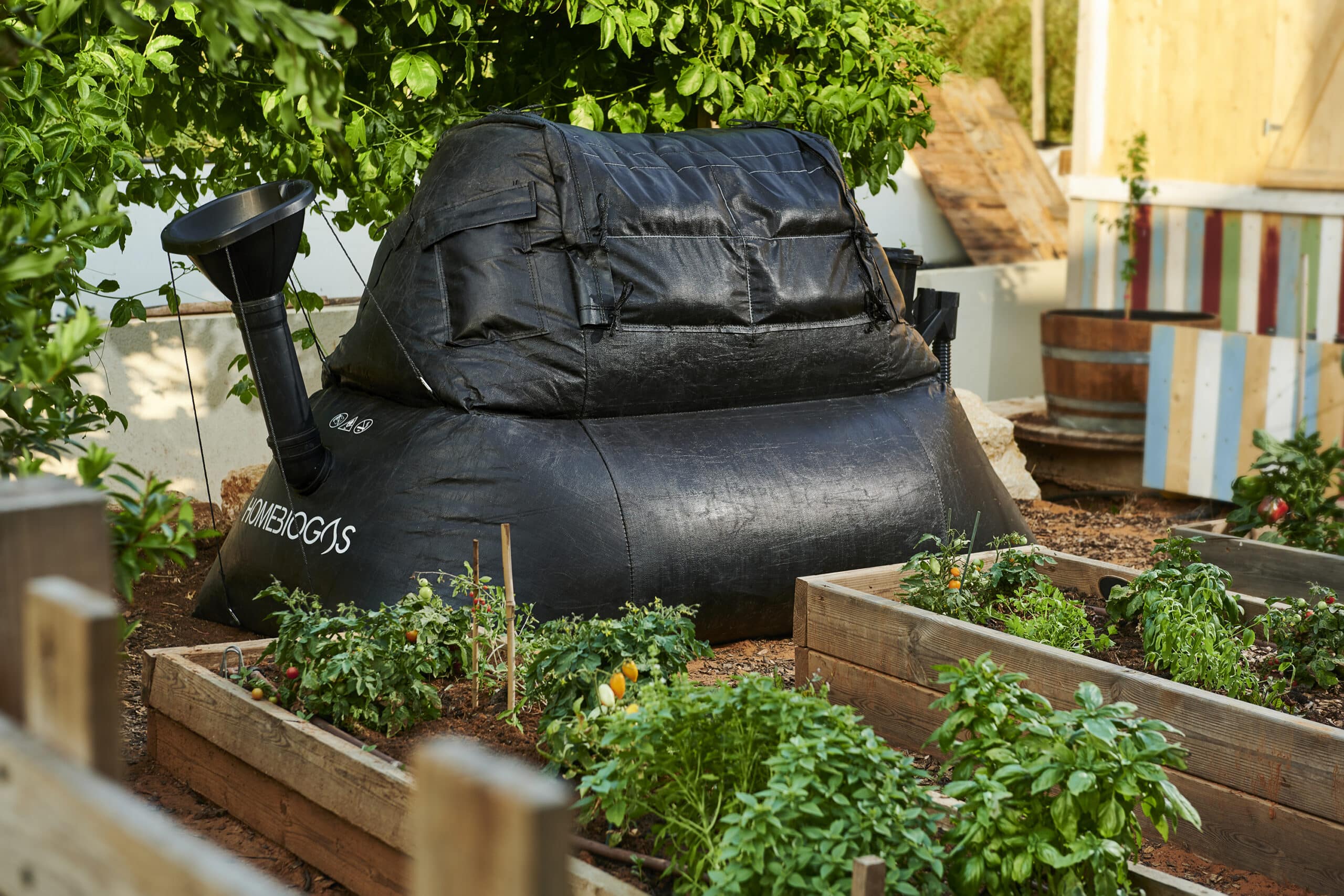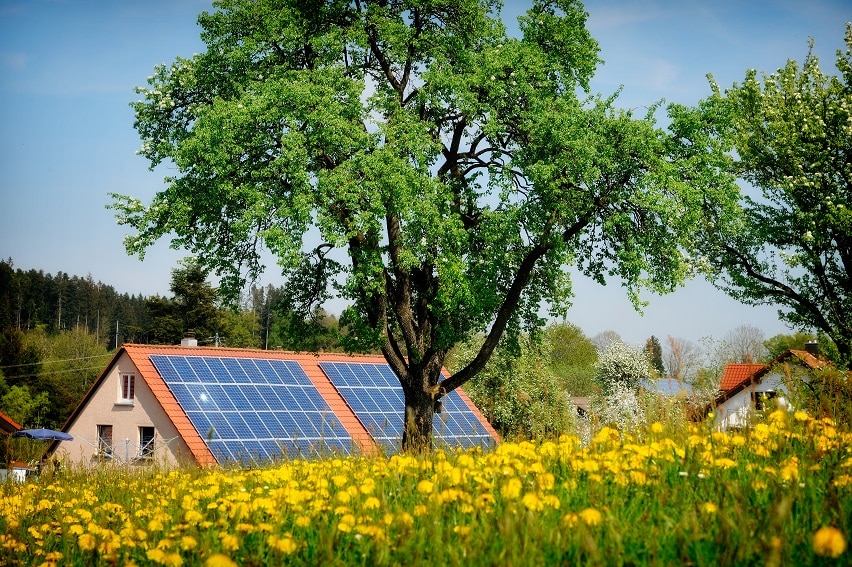
What is an energy-self-sufficient home?
A self-sufficient home is a house that can generate enough power to function without an external power supply. It usually uses renewable energy (such as solar power) and an energy storage system for powering lights and appliances, heating and cooling, which makes it environment-friendly and highly energy-efficient.
An energy-self-sufficient home is built and equipped to maximize the energy produced and optimize its usage. Sometimes, the construction can also have a system for collecting rainwater and optimizing water consumption.
Among the elements that can make a house energy self-sufficient, there are:
- Correct orientation — most windows and doors should face south and north for increased energy efficiency.
- Proper shape — with fewer corners, dome-shaped (half-sphered) houses are the most energy-efficient. Another good option is building cube-shaped homes.
- Suitable building materials — building with materials like insulating concrete, foam energy bricks, compressed soils, or vacuum insulation panels can increase energy efficiency and reduce heating costs.
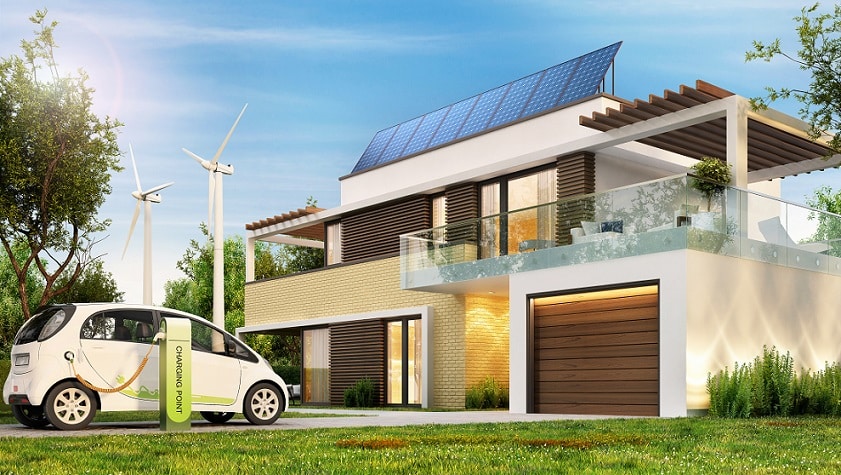
The benefits of owning an energy-self-sufficient home
- You have low energy costs. Installing a renewable energy source can be a significant upfront expense, but your house will have low electricity costs once your systems are installed and paid for. Moreover, you don’t have to worry about energy bills anymore.
- Your house’s value grows. As energy efficiency has become a high priority for homebuyers, energy-efficient-rated homes can cost at least 2.7% more than unrated homes. Energy-self-sufficient homes can be sold for even better prices.
- Your house has a low carbon footprint — if you rely exclusively on renewable energy and optimize consumption, you reduce the building’s environmental impact and counter climate change.
- You pay lower insurance premiums — some insurance companies reward homeowners for using green materials and opting for energy-efficient systems.
Practical steps to building an energy-self-sufficient home
Here’s a step-by-step guide to implementing the best self-sufficient energy measures to build an energy-self-sufficient home for you and your family.
Step 1. Switch to renewable energy
The first thing to know is how much power your home uses on average to determine the appropriate system size. Your electric bills can provide essential information about the amounts of energy you consume and the peak usage hours in your house.
As different technologies provide various levels of electricity in different locations, this initial assessment can also help you identify the best power sources for your home:
- Solar power can provide reliable, clean energy, with solar panels present in over 2 million households in the US alone. Solar panels can also function on cloudy days but at lower efficiency than in direct sunlight. The solar energy market is economically competitive, as energy production costs have dropped significantly.
- Wind power usually comes from utility-scale wind farms, but smaller solutions can be found. Small turbines range in size from 400 watts to 20 kilowatts; as technology advances, these devices become quieter, making them suitable for domestic usage.
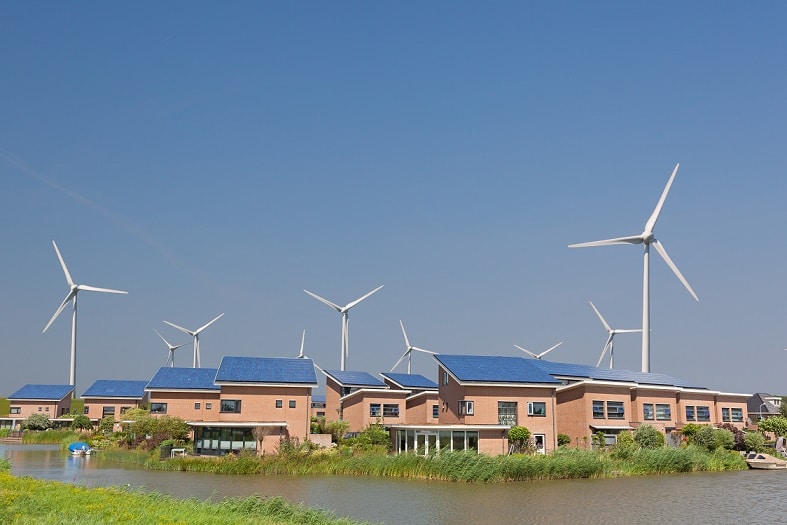
- Air source and ground source heat pumps draw heat from the environment to provide low-carbon heating and hot water.
- Biogas upgraded to natural gas standards works similarly to methane for cooking and heating.
The initial cost of installing the necessary equipment is relatively high for most green power sources. For example, the break-even point for solar panels can be between 5 and 15 years after installation.
Before installing your system of choice, ensure your modifications are consistent with local regulations. As a rule of thumb, authorities encourage renewable energy, but some areas could limit the development of specific power sources or establish restrictions for renewable energy installations.
Step 2. Insulate your house
More than 60% of the energy used by households goes into heating spaces, with an additional 15% necessary for water heating. Installing insulation is one of the best ways to keep the heat in your home and the cold out as you turn your house into an energy-self-sufficient building. Not only will insulation keep your energy consumption (and bills) low, but it will also reduce your carbon footprint.
Insulation solutions available:
- Cavity wall insulation — consists of drilling holes in the outside walls, inserting insulation, and sealing the holes with cement. It’s used for houses with cavity walls — walls with a gap between the external layer, made of brick, and the inner layer, made of concrete block.
- Solid wall insulation involves applying insulation boards internally or externally to increase the construction’s energy efficiency.
- Pipe insulation — consists of covering water pipes with insulation material to prevent freezing and heat loss.
- Insulation behind radiators consists of placing foil-faced expanded polystyrene lining on the wall directly behind the radiator so that the escaping heat is reflected back into the room.
- Floorboard insulation — means adding a layer of polyfoam, silicone, rigid foam, fiberglass, or rubber between the subfloor and floor to keep the surface from getting cold in winter.
- Draught-proofing — involves locating and repairing draught sources to make your home more energy efficient.
It’s best to start with the walls, as they’re responsible for one-third of the lost heat in your home. Depending on the type of walls, you can hire an expert or make it a DIY project. The costs and energy savings will depend on the type of insulation you opt for, your location, and the energy sources you use for heating.
Furthermore, replacing old windows with energy-efficient ones can maximize your insulation efforts. While making these changes, you must maintain a well-ventilated house to reduce condensation and dampness.
Step 3. Optimize your household’s energy usage
Another step toward becoming energy self-sufficient is reducing energy consumption by incorporating energy efficiency into your daily household.
For example, a smart thermostat can help you adjust the temperature in each room of your home based on your habits and preferences. This investment enables you to save energy while remaining comfortable.
When optimizing energy consumption, the little things can be just as important as the major investments, making a significant difference:
- Unplug your devices when no one’s using them.
- Remove all halogen downlights and use LEDs instead.
- Switch off the lights in the room when you exist.
- Buy home appliances with good energy ratings.
- Avoid devices with “standby” mode to prevent additional energy consumption.
Step 4. Reduce water consumption
Reducing the use of fresh water is another way to become energy self-sufficient, as less consumed water means less energy used for recycling it. Depending on your budget and local regulations, you can choose how far you want to go with this — from simple things, such as buying a water-efficient shower cap to recycling grey water to becoming independent by drilling a well or collecting rainwater.
To make your home independent of central water supplies, you must plan for water sustainability to ensure you get enough fresh water for your daily needs all year.
Some possible solutions are:
- Drilling a well to have an independent water source.
- Collecting rainwater. You need to install a complex system that includes elements like a rain head, gutter screening, a water diverter, and appropriate tank screens that ensure water quality.
- Storing stormwater. All the water flowing over the ground and driveways can complete your toilet, garden, and outdoor water supply.
Optimizing water consumption will also help reduce the need for energy inside your home. From investing in smart, water-efficient appliances to opting for a waterless toilet, many techniques can help you achieve this goal over time.
Overall, achieving water independence is costly, and you must test your water source several times a year for health and safety reasons. But the long-term benefits are worth the investment.
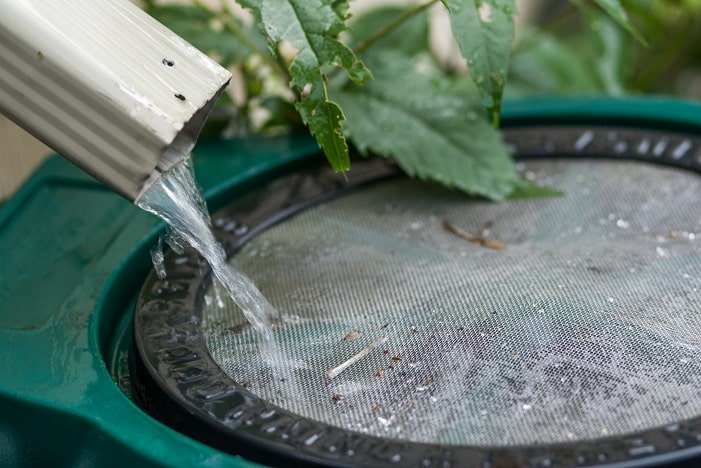
HomeBiogas solutions for energy-self-sufficient home
Making your own cooking gas is one of the best self-sufficient energy methods, as it also prevents organic waste disposal in landfills. HomeBiogas solutions enable homeowners to treat organic waste on-site and turn it into a renewable, carbon-neutral power source for cooking.
It brings you one step closer to an energy-self-sufficient home while actively countering climate change.
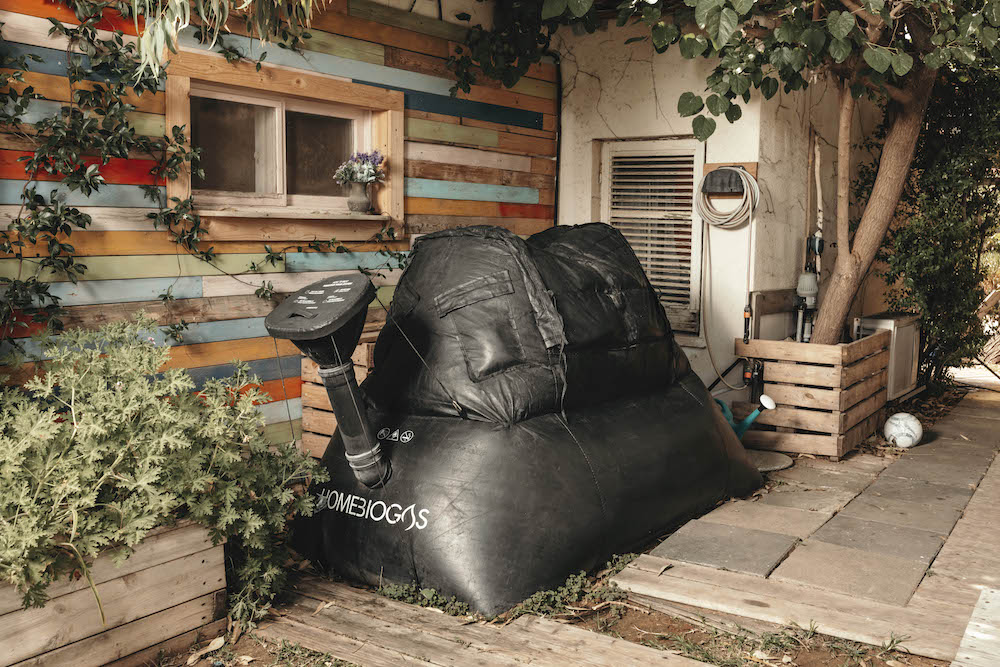
The HomeBiogas system also provides organic liquid Bio-fertilizer containing all the essential elements needed for a healthy plant growth.
It’s an efficient, easy-to-use waste-to-resource solution that supports regenerative agriculture and farming.
Final Thoughts
An energy-self-sustaining home makes you energy-independent and has excellent benefits for the environment. The upgrade comes with a high price, though. The investment necessary for installing all the systems to produce, store energy, and optimize consumption is increased.
Plus, getting used to the new systems is a lot of work. But the rewards are well worth it, as you increase your property’s value, save money in the long run, and live a self-sufficient life.
